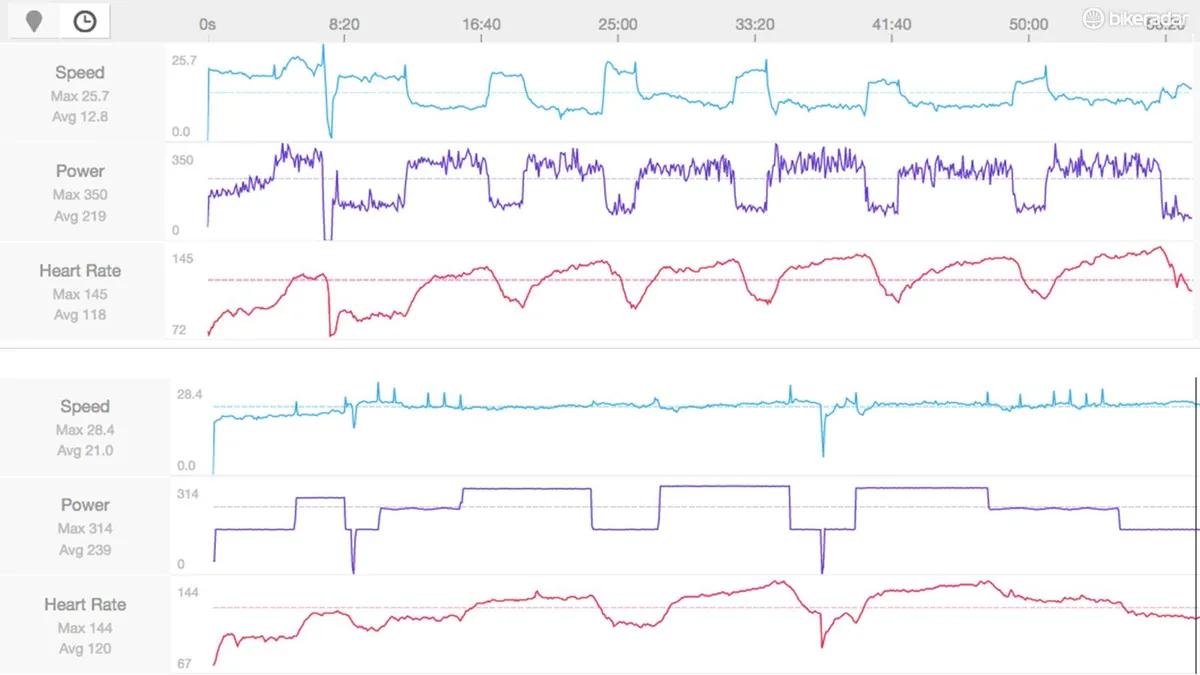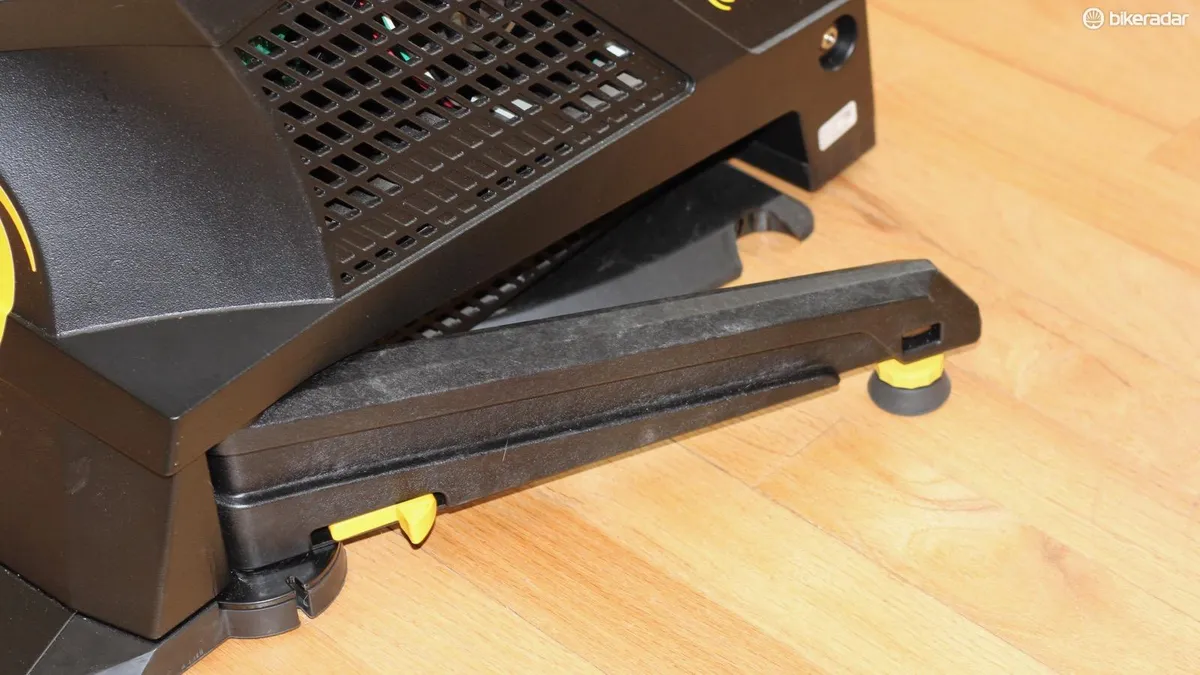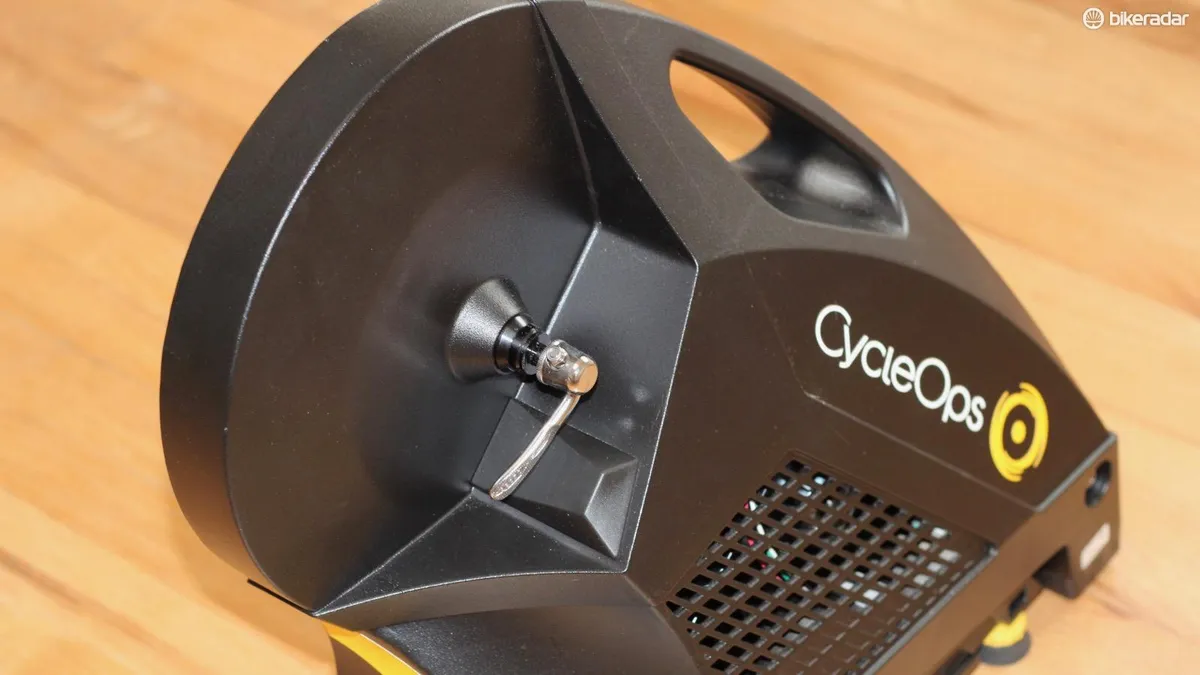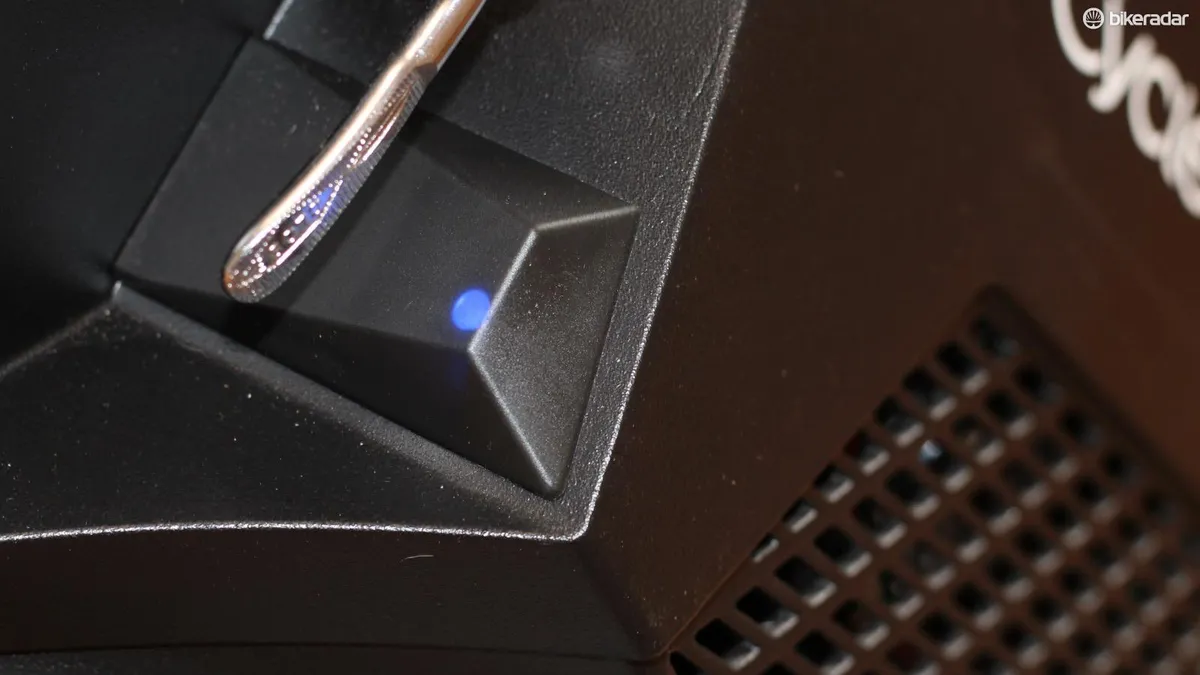Updated Nov 2017 after more testing
CycleOps has made solid trainers for decades and, under its PowerTap brand, power meters for almost as long. The Hammer direct-drive smart trainer combines both technologies, with the ability to not only measure power but wirelessly control resistance in sync with third-party training software such as Zwift or TrainerRoad.
The 'direct drive' means you take out your rear wheel and mount your bike directly on the trainer, eliminating the wheel and the tire from the equation.
In general, the Hammer performs very well, on par with the category leaders, the Wahoo Kickr and the Tacx Neo.
Whether mimicking hills in a virtual program or raising and dropping resistance to a specific wattage with an interval program, the Hammer smoothly adjusts the ride with an electronic brake working in tandem with a massive, 20lb flywheel.
CycleOps Hammer overview
- 20lb flywheel with electric-brake resistance controlled by third-party apps and software
- Receives and transmits info via Bluetooth and ANT
- Works with quick-release and thru-axle bikes
- Integrated front tray tucks into frame when not in use
- 47lb / 21.3kg weight
- 72dB at 200w/80rpm, 86dB max
- Claimed accuracy of /- 3%, but I found power readings to be within 2% of pairs of power meters (Quarq/Stages, Shimano/Garmin, Pioneer/Garmin)
- Works with Zwift, TrainerRoad, CycleOps' own Rouvy app and other apps
10 of the best smart trainers on the market today
CycleOps Hammer ride impressions and power comparisons
Whether riding a virtual course on Zwift or VirtualTraining, or following specific intervals on TrainerRoad, the Hammer adjusts resistance quickly and smoothly.
Like all smart trainers, the beauty of the Hammer is that — once you plug it into a software on your phone or computer with either Bluetooth or ANT — you just ride and let the electronics do their thing, adjusting the resistance to mimic hills or to the specified intensities of your interval workouts.
I tested the Hammer against pairs of power meters and found the averages to always be within two percent, with the Hammer always reading slightly lower. Engineers at both CycleOps and Tacx, which makes several direct-drive trainers, said that this small delta can be attributed to drivetrain frictional losses, which makes sense.
I tested one unit in late 2016 and another in late 2017 and found the measuring consistency to be excellent both times, across numerous rides.

Physically, the Hammer sits solidly on the floor. The legs pop out, releasing a thin wheel tray from underneath.
I appreciate CycleOps' move to a lower trainer height than its previous Silencer direct drive model, which required a wheel block to level the bike.
With the Hammer you don't need to use the wheel tray if, like me, you're riding in a grimy garage and can't be bothered. But if you are setting your bike on a mat, carpet or elsewhere inside, the wheel tray is easy enough to use.

CycleOps Hammer vs. the competition
Personally, I found the Hammer's approach to feel more natural and similar to doing intervals outside="pullquote">
Wahoo kicked open the smart trainer category with its Kickr, now in a second iteration. In the US at least, the Hammer and the Kickr are priced identically and perform pretty darn similarly.
The most notable difference between the two is how exacting the controlled resistance is to a particular program.
On most interactive workouts, whether in Zwift or TrainerRoad or elsewhere, you are shown the wattage target (to which the smart trainer sets its resistance) and your actual wattage (the power you are producing at that moment).
Using a Kickr, your reported power tracks eerily close to the target power, because Wahoo has removed acceleration from the algorithm, resulting in interval blocks that look satisfyingly geometric.
Using a Hammer, the resistance is still controlled, but it measures your fluctuations in power.

My main gripe with the Kickr is that when you stop pedaling for a few seconds during an interval on ERG mode, getting started again feels like you are required to produce 1,500w to get on top of the gear because acceleration is removed from the algorithm.
The Hammer is more forgiving; if you fall off the pace when doing a workout and your wattage drops to 0, you can spin back up again without snapping your legs in the process. CycleOps built in a feature where, from 0–7mph, resistance drops way off regardless of what is prescribed, allowing you to get going again. Then above 7mph the full resistance kicks in.
Last winter I griped that the Hammer could slip in resistance for a split second on high-power, low-speed surges, for example when you stand and stomp on the pedals from a near stop. This has since been fixed. I tried a number of times to replicate the problem and could not.

My only complaint is the noise at full effort. At a steady 200w/80rpm, the Hammer is a reasonable 72dB. (I measured the Kickr and the Elite Direto at 71, and the Tacx Neo and Tacx Flux at 70dB.) At maximum effort, though, I measured the Hammer at 86dB. (Only the Direto was also 86; the Kickr, Neo and Direto topped out at 80dB.)
Click through the gallery above for more power-comparison graphs.
CycleOps Hammer bottom line
The Hammer is an excellent smart trainer that quickly connects to the major training software and apps, and controls resistance smoothly and strongly.
If you have ridden a Kickr, the data will seem less controlled, but I believe the experience is just as good.
The power measurement has proven to be very reliable, tracking along closely with multiple dependable power meters, and always just a few watts below.
Like all smart trainers, the Hammer is neither light nor cheap.
You certainly do not need a smart trainer to ride Zwift or TrainerRoad, but a controlled-resistance tool such as the Hammer certainly enhances the experience.

="pullquote">








